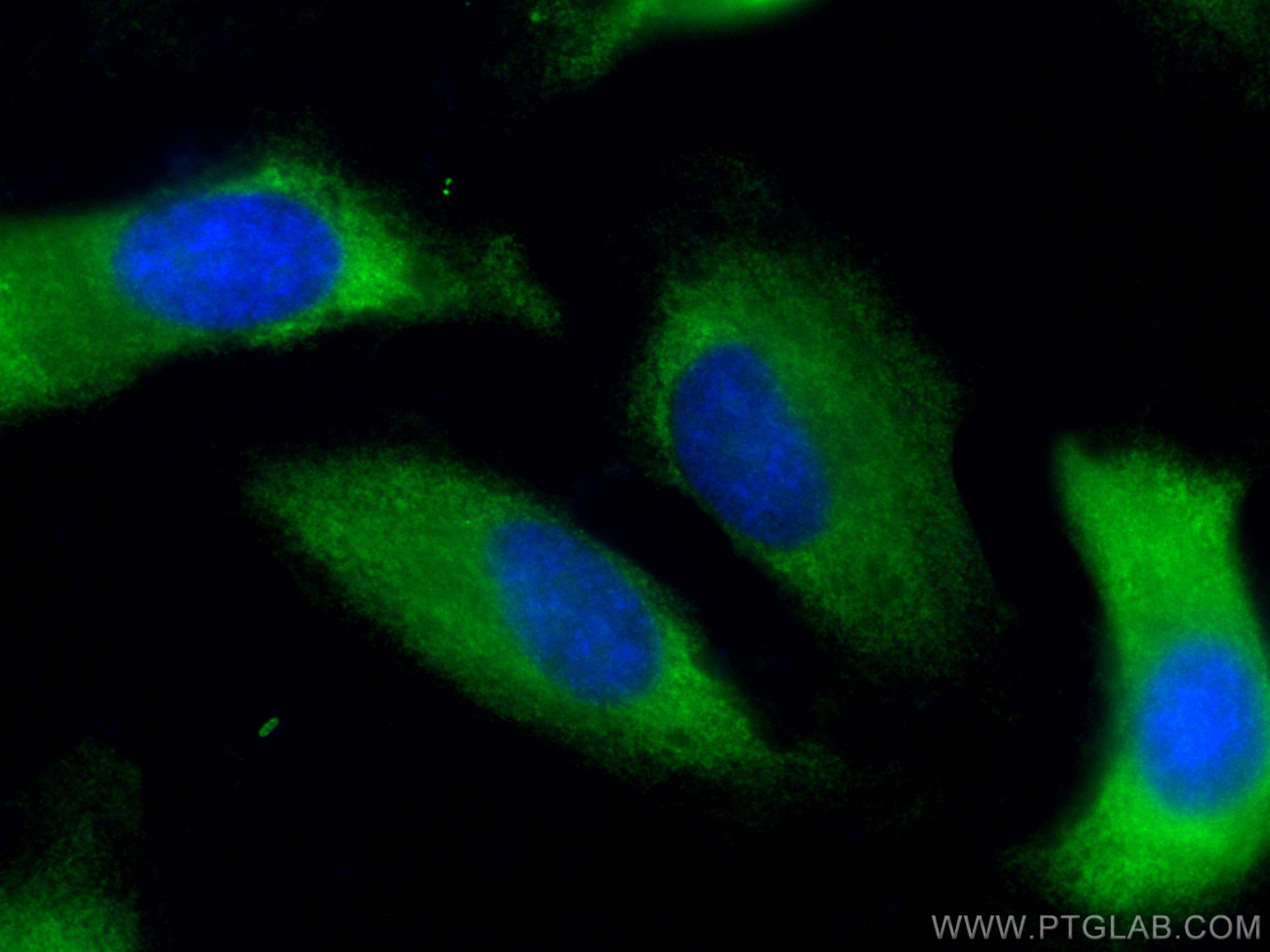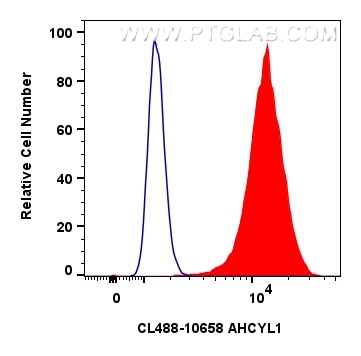- Phare
- Validé par KD/KO
Anticorps Polyclonal de lapin anti-AHCYL1
AHCYL1 Polyclonal Antibody for IF/ICC, FC (Intra)
Hôte / Isotype
Lapin / IgG
Réactivité testée
Humain, rat, souris
Applications
IF/ICC, FC (Intra)
Conjugaison
CoraLite® Plus 488 Fluorescent Dye
N° de cat : CL488-10658
Synonymes
Galerie de données de validation
Applications testées
| Résultats positifs en IF/ICC | cellules HeLa, |
| Résultats positifs en FC (Intra) | cellules HeLa, |
Dilution recommandée
| Application | Dilution |
|---|---|
| Immunofluorescence (IF)/ICC | IF/ICC : 1:50-1:500 |
| Flow Cytometry (FC) (INTRA) | FC (INTRA) : 0.80 ug per 10^6 cells in a 100 µl suspension |
| It is recommended that this reagent should be titrated in each testing system to obtain optimal results. | |
| Sample-dependent, check data in validation data gallery | |
Informations sur le produit
CL488-10658 cible AHCYL1 dans les applications de IF/ICC, FC (Intra) et montre une réactivité avec des échantillons Humain, rat, souris
| Réactivité | Humain, rat, souris |
| Hôte / Isotype | Lapin / IgG |
| Clonalité | Polyclonal |
| Type | Anticorps |
| Immunogène | AHCYL1 Protéine recombinante Ag1017 |
| Nom complet | S-adenosylhomocysteine hydrolase-like 1 |
| Masse moléculaire calculée | 65 kDa |
| Poids moléculaire observé | 60 kDa |
| Numéro d’acquisition GenBank | BC007576 |
| Symbole du gène | AHCYL1 |
| Identification du gène (NCBI) | 10768 |
| Conjugaison | CoraLite® Plus 488 Fluorescent Dye |
| Excitation/Emission maxima wavelengths | 493 nm / 522 nm |
| Forme | Liquide |
| Méthode de purification | Purification par affinité contre l'antigène |
| Tampon de stockage | PBS with 50% glycerol, 0.05% Proclin300, 0.5% BSA |
| Conditions de stockage | Stocker à -20 °C. Éviter toute exposition à la lumière. Stable pendant un an après l'expédition. L'aliquotage n'est pas nécessaire pour le stockage à -20oC Les 20ul contiennent 0,1% de BSA. |
Informations générales
S-adenosylhomocysteine hydrolase-like protein 1 (AHCYL1), also known as IP3 receptor-binding protein released with IP3 (IRBIT), regulates IP3-induced Ca2+ release into the cytoplasm of cells(PMID:23145124). This protein is also named as DCAL, XPVKONA and belongs to the adenosylhomocysteinase family. AHCYL1 mRNA and protein are most abundant in the glandular epithelium of adenocarcinoma of cancerous, but not normal and AHCYL1 protein is predominantly in the nucleus(PMID:22826361). It has 2 isoforms produced by alternative splicing.
Protocole
| Product Specific Protocols | |
|---|---|
| IF protocol for CL Plus 488 AHCYL1 antibody CL488-10658 | Download protocol |
| FC protocol for CL Plus 488 AHCYL1 antibody CL488-10658 | Download protocol |
| Standard Protocols | |
|---|---|
| Click here to view our Standard Protocols |



